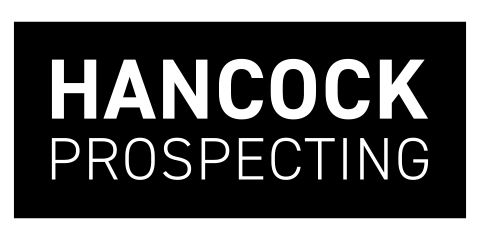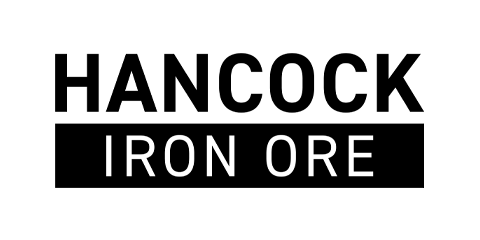In an ideal world, Western Australia should have no trouble selling its clean and green nickel to the world’s electric vehicle makers.
In such an environment, Andrew Forrest’s Fortescue group should be able to make and market green hydrogen.
But it’s not an ideal world, as the local nickel industry has discovered, with most WA producers of the metal forced to close because they can’t compete with cheap Indonesian nickel.
Green hydrogen, which is easy to make in laboratory conditions, should also be in demand.
But it’s not, because splitting water into oxygen and hydrogen is an energy intensive and expensive process, which is why Fortescue is reassessing its rush into the gas.
Those two examples lead to a third commodity being promoted by environmentalists – green iron ore – which is yet to demonstrate its commercial appeal and might not be able to compete with conventional iron ore, such as that soon to be mined at Simandou in Guinea.
The problem with nickel, hydrogen and green iron ore is that simply calling something green doesn’t mean much when it comes to convincing a customer to pay more than for a similar non-green product.
The failure to sell green nickel to EV makers should have rung an early warning bell for investors, who had been told the world would demand metal with the lowest environmental impact because their cars were based on a similar claim.
However, EV makers have problems that go far beyond the nickel in their batteries.
They, too, are discovering that being environmentally pure does not mean instant success, with customers balking at the initial price and other problems associated with EV ownership.
Firstly, extracting the nickel used in EVs can be heavily polluting, particularly in terms of Indonesian nickel, which requires the clearing of rainforest and electricity made from burning coal.
Other issues emerge once you own an EV, such as range anxiety and access to charging points.
But the biggest problem will be future disposal, because the near-total absence of a second-hand market means EVs will be heading for the dump much faster than other vehicles.
In time, problems with EVs will be fixed because battery power is undoubtedly the future of personal transport. Just not now.
Looked at from a wider perspective, there are a number of common threads connecting green nickel, green hydrogen and other materials claiming to be environmentally pure, with the most obvious being their cost.
True believers in a green future claim the world must become a lot greener or risk a climate crisis, skirting around the questions of how much it will cost and who pays, in another example of consumers’ sensitive hip-pocket nerve.
Electricity is the next crunch point for green believers because the promise of cheaper power from solar panels and wind turbines is not yet happening.
It might never happen if material and construction costs continue to rise, as a global study by the McKinsey & Company management consultancy into offshore wind power recently demonstrated.
Rather than delivering low-cost electricity, offshore wind power is proving to be more expensive because of high initial installation costs and heavy-duty maintenance requirements in a hostile marine environment.
The same problems of high costs and technical obstacles are appearing in another form of energy once promoted for its green qualities: biofuel made from processing used cooking oil and animal fats.
The marketing appeal of biofuel, especially for use in aviation gasoline, was so strong that Shell started building a factory in the Netherlands to make the material, only to stop construction last month and write-off the $US1 billion invested.
Multiple failures of projects claiming to be green is a significant problem for investors attracted by environmental causes, with most issues traced back to developers trying to do too much too quickly without thoroughly testing the business case.
WA nickel was always going to have a problem when a lower-cost rival started to develop in Indonesia, a perfect example of a famous military warning that no plan survives first contact with the enemy.
Gas go-ahead
Green hydrogen, which remains a focus at Fortescue, is also an interesting example of what happens when billionaires pursue different ways of achieving the same objective, potentially leaving room for only one winner.
Gina Rinehart, who shares the same iron ore business base as Andrew Forrest, has chosen a different way to build a new energy business, preferring methane, or natural gas, over hydrogen.
Deeply derided by Mr Forrest as a source of pollution, methane has a proven market, strong and growing demand and is handsomely profitable today, whereas green hydrogen has a limited market and is not profitable.
Mrs Rinehart’s exposure to methane is through a 50 per cent stake in Senex Energy, a business producing gas in Queensland for Australia’s east coast market.
Without fanfare in June, Senex, which is half-owned by South Korean steel maker Posco, received Australian government approval to develop the $1 billion Atlas (methane) gas project.
With an assured market from gas-thirsty industrial customers, the profitability of Atlas is guaranteed, barring future government interference in the energy industry.
There is a bitter irony in Mr Forrest being forced to trim Fortescue’s exposure to green hydrogen a month after Mrs Rinehart got her methane approval, but there is also a perfect business model of investing in a proven commodity rather than pursuing an unproven concept.
Asset drain
A topic more serious than battling billionaires is the growing problem of Australia ‘exporting’ its best assets: a trend that includes BHP wanting to grow in South America rather than South Australia.
Woodside Energy, which has deep roots in WA, clearly signalled in July that it preferred to grow in the US rather than Australia with its $1.4 billion acquisition of a liquefied natural gas project in Louisiana.
There are other examples of Australia losing out to overseas investment opportunities, though most have been decisions made by big resources companies with international reach.
But the export of Australia’s wealth could become more serious if a suggestion from famed US financier Michael Milken gains traction.
Once known as the ‘junk bond king’, Mr Milken reckons that Australia’s pot of gold, the country’s $4 trillion superannuation industry, could become financier to Asia where fast-growing industries need capital to expand.
From an investment perspective, sending Australian superannuation savings to Asia makes sense.
But it’s an awful idea for the country, reducing the pool of local capital needed to create jobs here rather than in another country.



